The Importance of Particle Characteristics in Metal 3D Printing
In metal 3D printing, Particle Size Analysis is a critical step in ensuring high-quality manufacturing. By leveraging advanced Particle Size Analyzers, industries can achieve superior control over powder characteristics, leading to enhanced print precision, improved mechanical properties, and greater overall efficiency in additive manufacturing processes. As 3D printing technology continues to advance, the role of particle analysis in optimizing material performance will remain indispensable.
Enhancing 3D Printing Quality Through Particle Size Analysis
For manufacturers looking to optimize their 3D printing processes, selecting a high-performance particle size analyzer is crucial.
By analyzing particle size distribution, circularity, and flowability, metal powder material manufacturers can leverage the analysis results from a particle size analyzer to achieve:
- Increased powder bed density and layer uniformity
- Enhanced flowability for consistent powder delivery
- Reduced porosity and improved mechanical properties of printed parts
- Decreased printing defects and material waste
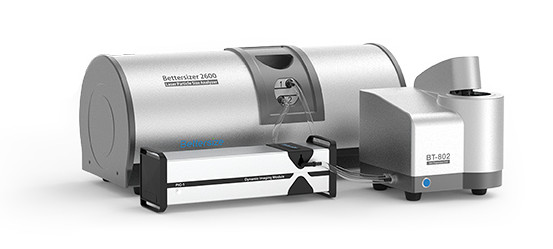
Bettersizer 2600WD Combined Particle Size Analysis and Particle Appearance Analyze : Best Choice for 3D Metal Printing Material
Key Factors Affecting 3D Printing Quality
When it comes to metal 3D printing, the quality of printed parts is highly dependent on the characteristics of the metal powder used. Several critical factors influence the final output, including:
-
Particle Size Distribution
-
Roundness of Particles
-
Chemical Composition
-
Oxygen Content
-
Fluidity of the Powder
Among these, Particle Size Analysis plays a crucial role in optimizing the printing process and ensuring high-quality results. Using a Particle Size Analyzer, manufacturers can assess the distribution of powder particle sizes to determine their suitability for specific 3D printing methods.
Understanding Particle Size Distribution in Metal 3D Printing
Metal 3D printing utilizes different particle size ranges depending on the energy source of the printer. The most commonly used particle size ranges include:
-
15-53μm
-
53-105μm
-
105-150μm (used in specialized applications)
The choice of particle size is influenced by the energy source of the printer:
-
Laser-based 3D printers: These printers operate with a finely focused laser beam, which efficiently melts finer powders. As a result, powders in the 15-53μm range are preferred for achieving high precision and smooth surface finishes.
-
Plasma beam 3D printers: These printers can handle coarser powders, typically in the 53-105μm range, providing greater deposition rates and increased material throughput.
By conducting precise Particle Size Analysis, manufacturers can optimize powder selection, ensuring better packing density, flowability, and consistency in metal 3D printing processes.
Importance of Roundness and Fluidity
Apart from size distribution, the roundness and fluidity of metal powder particles significantly impact print quality.
-
Roundness: A measure of how closely particles resemble a perfect sphere, with values ranging from 0 to 1 (where 1 represents a perfect sphere). Higher roundness enhances flowability, leading to better powder dispersion and uniform layering.
-
Fluidity: This refers to the ability of the powder to flow smoothly through the printing system. It is typically measured by the time required for a certain mass of powder to pass through a standardized aperture. Higher fluidity ensures consistent powder feeding and layer deposition, reducing defects in the final printed parts.
Analyze Metal Power Material by Bettersizer2600-WD Particle Size Analyzer
The Bettersizer2600-WD is an advanced dry and wet laser Particle Size Analyzer that integrates dynamic image analysis. It accurately measures the particle size distribution of metal powders and simultaneously captures various parameters of powder morphology, including circularity, aspect ratio, and particle size, providing a total of 24 parameter results.
The Bettersizer2600-WD Particle Size Analyzer is a versatile instrument for one-step analysis of metal 3D printing materials. Let's examine the practical application of the Bettersizer2600-WD **Particle Size Analyzer** in analyzing the particle size and circularity of nickel alloy powder.
From the results shown in Figure 1, we can observe that the particle size distribution of the powder ranges from 10µm to 100µm, with the highest concentration at the 30µm peak:
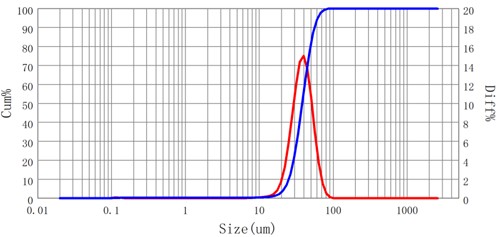
Figure1 Particle Size Distribution of Nickel Powder (Red) and Accumlated Distribution (Blue)
The results of six repeated tests on the sample demonstrate the high consistency and stable measurement results of the Bettersizer2600-WD Particle Size Analyzer.
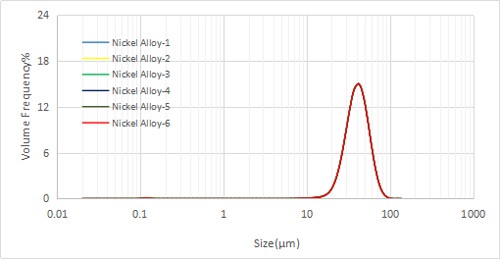
Figure 2. Six Repeated Measurements Result - Bettersizer 2600WD High Stability
Spherical or sub-spherical powders exhibit excellent flowability, reducing the likelihood of clogging the powder supply system during the printing process.
Furthermore, spherical powders spread more easily into thin layers, enhancing the dimensional accuracy and surface quality of 3D-printed parts. Additionally, the density and uniformity of the parts are improved, making spherical powders the preferred raw material for 3D printing. The following is the circularity analysis of the nickel alloy powder.
Next, from the image analysis results of the Bettersizer2600-WD Particle Size Analyzer, we can observe the circularity distribution of this sample. The distribution chart shows that powder particles with values closer to 1.0 are closer to perfect circles. The circularity of this powder sample is good but clearly has room for improvement.
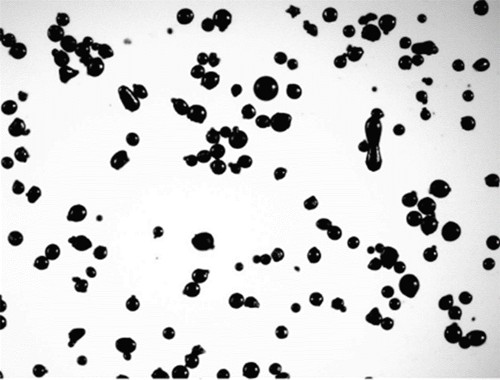
Figure 3: Image Capture of Nickel Alloy Powder
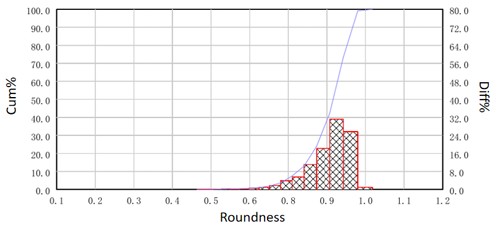
Figure 4: Circularity Analysis Results of Nickel Alloy Powder Image
Particle Size Analyzer Aids Metal Powder Manufacturers in Developing Advanced Materials
As 3D printing technology continues to mature and advance, it is expanding into new applications to meet diverse needs.
For particularly complex, difficult-to-process, and non-mass-produced metal parts, 3D printing demonstrates a strong competitive advantage. With the continuous advancement of metal powder bed fusion technology, metal powder materials are also continuously improving from traditional powder metallurgy, evolving from single raw materials to composite, diversified, and refined materials, achieving results that traditional castings cannot. To maintain this advantage, it is essential to strictly control the particle size distribution and circularity of the powder to ensure superior product quality in additive manufacturing. The Bettersizer2600-WD **Particle Size Analyzer** will help you control material performance and quality from a microscopic perspective. To learn more about the powerful features of the Bettersizer2600-WD **Particle Size Analyzer**, please "Contact ACTTR Technology", and our specialists will be more than happ to assist you.
About Metal 3D Printing
Current metal 3D printing technologies can be categorized into the following:
Powder Bed Fusion (PBF)
Powder bed fusion 3D printers, including Selective Laser Sintering (SLS), Selective Laser Melting (SLM), and Direct Metal Laser Sintering (DMLS), melt and fuse metal powder layer by layer using a laser or electron beam. The printing space is usually filled with inert gas to prevent the metal material from oxidizing during the melting process, which would render the printed parts unusable.
Key features of powder bed fusion metal 3D printers:
- High precision: Capable of producing parts with complex geometries and fine details.
- Wide material selection: Compatible with various metal powders.
- Excellent surface quality: Finished products typically have smooth surfaces, reducing post-processing needs.
Based on the manufacturing method, PBF can be further divided into the following technologies:
Selective Laser Sintering (SLS)**
SLS is a popular PBF technique known for its ability to create complex geometries without the need for support structures. It has high process efficiency and is ideal for rapid prototyping and small-batch production. This technique uses a pulsed laser to sinter powder together, forming a solid structure. However, this method does not melt the powder to produce a phase change; the sintering temperature is approximately 85% of the material's melting point. Commonly used materials include powder glass, plastic, concrete, and ceramics.
Direct Metal Laser Sintering (DMLS)
DMLS is a specialized form of SLS that focuses on sintering metal powders. Strictly speaking, DMLS is actually melting metal rather than sintering, but it does not completely melt the powder into a liquid state. It uses a laser to melt the surface of the powder to the extent that the particles can bond together. Compared to SLM, DMLS requires additional post-processing to achieve a similar surface finish. Although its mechanical properties are slightly inferior to SLM, it is still sufficiently strong, and its machine cost is much lower than SLM.
Selective Laser Melting (SLM)
SLM selectively melts metal powder materials into a liquid state layer by layer to produce 3D objects. The printing space is filled with inert protective gas (nitrogen or argon) to prevent the metal from oxidizing during the melting process. Because the powder flows after melting, the printing process relies on support structures to maintain the stability of the components during printing and to dissipate excess heat and prevent part deformation.
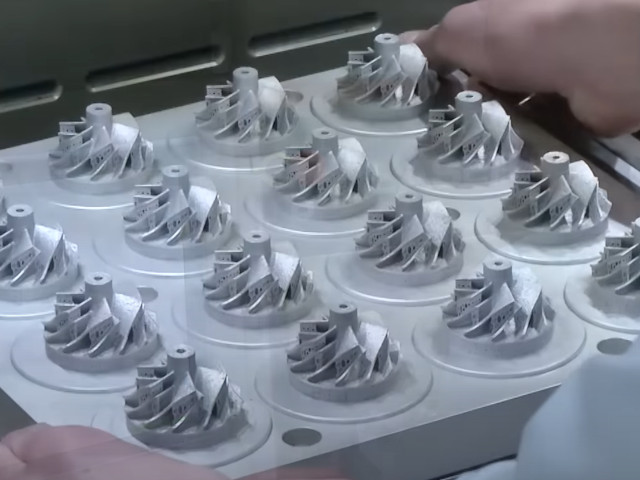
Perfect 3D Metal Printed Impeller by SLM (DMG MORI)
Directed Energy Deposition (DED)
Directed energy deposition technology uses a focused energy source (such as a laser or electron beam) to melt and deposit material. It can use metal powder or metal wire as raw material. Generally, the metal powder is first made into wire.
Key features of directed energy deposition metal 3D printers:
- Part repair and additive manufacturing: Suitable for repairing parts or adding material to existing components.
- High material utilization: Deposits material only where needed, reducing waste.
Binder Jetting
Binder jetting technology forms solid parts by depositing a liquid binder onto layers of metal powder, followed by sintering.
Key features of binder jetting 3D printers:
- Fast printing speed: Faster than PBF because it does not require melting metal.
- Cost-effective: Lower unit cost, especially suitable for high-volume production.
Material Extrusion
Material extrusion technology is similar to traditional FFF/FDM plastic 3D printers, but it uses metal-filled filaments suitable for metal parts. These filaments are made by mixing metal powder and plastic in a specific ratio. During the printing process, the filament is heated to a flowable state and deposited layer by layer to create a 3D object.
Key features of material extrusion metal 3D printers:
- Easy to get started: More affordable and simple to use, suitable for small businesses and educational purposes.
- Versatility: Can print with various metal-filled filaments.